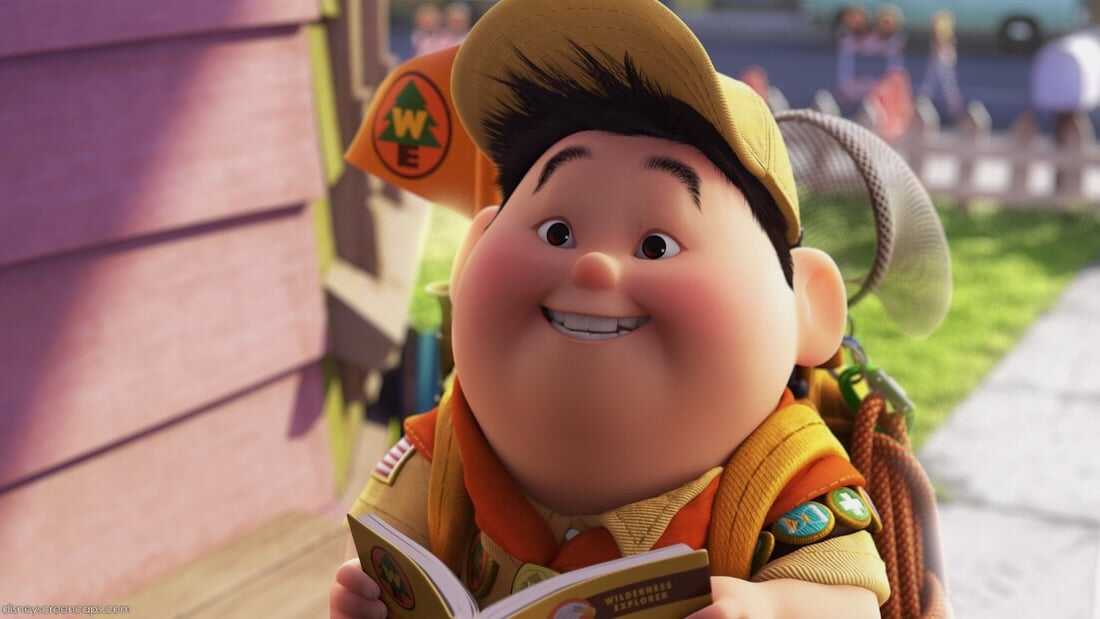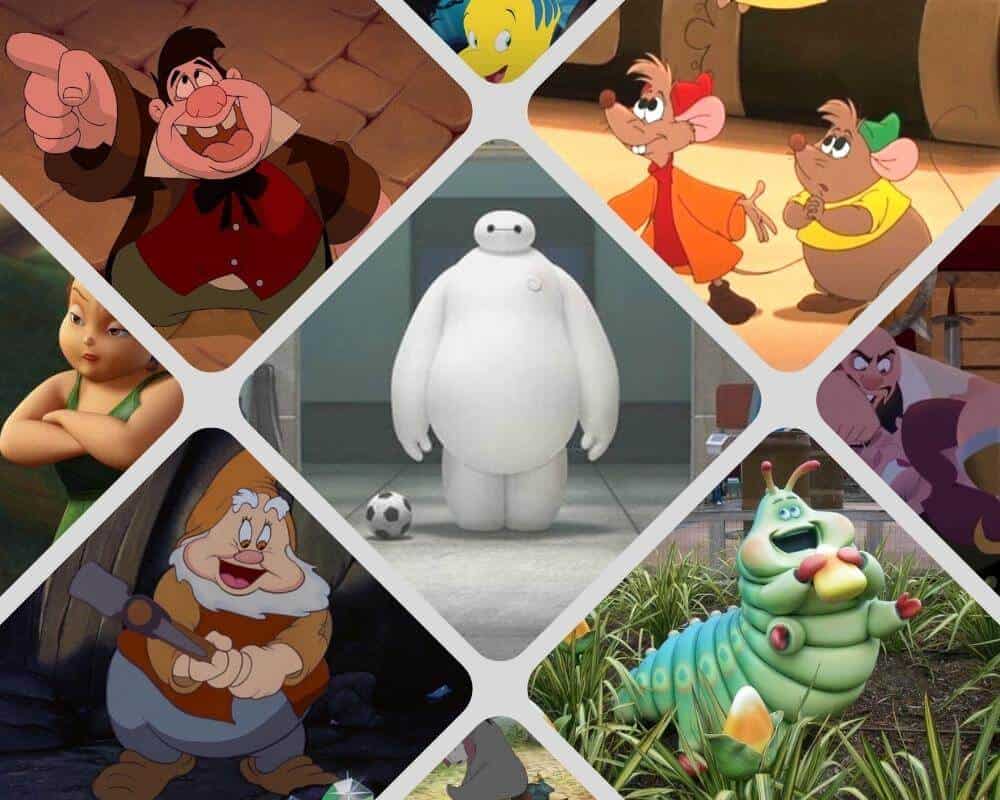Short and fat cartoon characters have long been a beloved staple in the world of animation, bringing joy and laughter to audiences of all ages. These characters often possess unique personalities and charm that make them stand out in the crowded world of cartoons. From their exaggerated features to their quirky antics, these characters leave a lasting impression on viewers.
The appeal of short and fat cartoon characters lies in their relatability and humor. Their physical traits often play a significant role in their storytelling, adding layers of comedy and depth to their narratives. Whether they are protagonists or supporting characters, their presence elevates the entertainment value of the shows they appear in.
In this article, we will delve deep into the world of short and fat cartoon characters. We will explore their history, characteristics, and the impact they have on the animation industry. Additionally, we will highlight some of the most iconic characters and analyze why they resonate so strongly with audiences.
Read also:Kabc Los Angeles Schedule
Table of Contents
- The History of Short and Fat Cartoon Characters
- Key Traits of Short and Fat Cartoon Characters
- Iconic Short and Fat Cartoon Characters
- Psychology Behind Their Appeal
- Impact on the Animation Industry
- Evolution Over Time
- Representation in Media
- Statistics and Audience Engagement
- How These Characters Are Created
- The Future of Short and Fat Cartoon Characters
The History of Short and Fat Cartoon Characters
The origins of short and fat cartoon characters can be traced back to the early days of animation. In the late 19th and early 20th centuries, animators began experimenting with exaggerated features to create memorable characters. One of the earliest examples is Felix the Cat, who, while not exactly short and fat, set the stage for future character designs.
As animation evolved, so did the portrayal of these characters. The 1930s and 1940s saw the rise of studios like Walt Disney and Warner Bros., which introduced iconic characters such as Porky Pig and Goofy. These characters became cultural icons, representing the humor and wit that animation could bring to life.
Early Influences
Early influences on short and fat cartoon characters came from vaudeville and slapstick comedy. Animators drew inspiration from these art forms to create characters that could perform comedic routines with ease. The physicality of these characters made them perfect for visual gags and slapstick humor.
Key Traits of Short and Fat Cartoon Characters
Short and fat cartoon characters are defined by several key traits that make them distinct from other animated characters. These traits contribute to their charm and appeal, making them unforgettable to viewers.
- Physical Appearance: Their short stature and round physique often exaggerate their features, making them visually striking.
- Personality: These characters are usually portrayed as friendly, humorous, and sometimes clumsy, adding to their relatability.
- Voice: Their voices are often distinctive, with a deep or raspy tone that complements their physical appearance.
Why These Traits Work
These traits work together to create a character that is both visually and emotionally engaging. Viewers are drawn to the humor and warmth that these characters exude, making them memorable long after the show ends.
Iconic Short and Fat Cartoon Characters
Over the years, several short and fat cartoon characters have achieved iconic status. These characters have left an indelible mark on the world of animation and continue to entertain audiences today.
Read also:Silverado Resort And Spa Napa Valley California
Porky Pig
Porky Pig, created by Warner Bros., is one of the most iconic short and fat cartoon characters. Known for his stutter and lovable demeanor, Porky has been a staple of animation since the 1930s. His adventures often revolve around his attempts to overcome challenges with humor and perseverance.
Goofy
Goofy, a creation of Walt Disney, is another classic example. With his tall but stout frame and clumsy antics, Goofy has entertained generations of viewers. His interactions with Mickey Mouse and other Disney characters have made him a household name.
Psychology Behind Their Appeal
The psychology behind the appeal of short and fat cartoon characters is rooted in human emotions and perception. These characters often evoke feelings of warmth and nostalgia, reminding viewers of simpler times.
Studies have shown that characters with exaggerated features are more memorable and engaging. This is because they tap into our innate ability to recognize patterns and associate them with emotions. The humor and charm of these characters resonate with audiences on a subconscious level.
Emotional Connection
Emotional connection plays a significant role in the popularity of these characters. Viewers often see aspects of themselves in these characters, identifying with their flaws and triumphs. This connection fosters a sense of loyalty and affection towards the characters.
Impact on the Animation Industry
Short and fat cartoon characters have had a profound impact on the animation industry. They have influenced character design, storytelling, and even merchandising. Studios recognize the value of these characters and continue to create new ones to capture the hearts of audiences.
Merchandising Opportunities
The popularity of these characters has led to lucrative merchandising opportunities. From toys to clothing, products featuring these characters are highly sought after by fans. This commercial success underscores their importance in the industry.
Evolution Over Time
As animation technology has advanced, so too has the portrayal of short and fat cartoon characters. Modern animation allows for more detailed and dynamic character designs, enhancing the appeal of these characters.
Contemporary examples include characters like Patrick Star from "SpongeBob SquarePants" and Bender from "Futurama." These characters maintain the charm of their predecessors while incorporating modern elements that resonate with today's audiences.
Modern Interpretations
Modern interpretations of short and fat cartoon characters often incorporate social commentary and complex narratives. This evolution reflects the changing landscape of animation and the expectations of contemporary viewers.
Representation in Media
Short and fat cartoon characters are represented across various media platforms, from television to movies and even video games. Their versatility allows them to thrive in different formats, ensuring their continued popularity.
Crossover Potential
These characters often appear in crossover events, where they interact with characters from other franchises. This not only expands their reach but also introduces them to new audiences, further solidifying their place in pop culture.
Statistics and Audience Engagement
Statistics show that short and fat cartoon characters consistently rank high in terms of audience engagement. Their ability to connect with viewers across demographics makes them a valuable asset for content creators.
For example, a study conducted by Animation Insights revealed that shows featuring these characters have higher viewership rates compared to those without. This data underscores the importance of character design in animation success.
Audience Demographics
Audience demographics for these characters are diverse, ranging from children to adults. This broad appeal is a testament to their universal charm and the timeless nature of their humor.
How These Characters Are Created
The creation of short and fat cartoon characters involves a meticulous process that combines artistry and storytelling. Animators start with sketches and concept art, refining the character's appearance and personality until they achieve the desired effect.
Once the character design is finalized, voice actors are brought in to bring the character to life. The synergy between visual and auditory elements is crucial in creating a fully realized character.
Character Development
Character development is an ongoing process that involves feedback from test audiences and industry professionals. This ensures that the character resonates with viewers and meets the high standards of the animation industry.
The Future of Short and Fat Cartoon Characters
The future of short and fat cartoon characters looks bright as animation continues to evolve. With advancements in technology and shifting audience preferences, these characters will undoubtedly adapt to remain relevant.
As new platforms emerge, such as streaming services and virtual reality, the potential for these characters to reach wider audiences increases. This exciting development ensures that short and fat cartoon characters will continue to entertain and inspire for generations to come.
New Opportunities
New opportunities for these characters include interactive experiences and immersive storytelling. By leveraging emerging technologies, animators can create more engaging and dynamic narratives that captivate audiences in unprecedented ways.
Conclusion
Short and fat cartoon characters have played a pivotal role in the world of animation, bringing joy and laughter to audiences worldwide. Their unique traits and timeless appeal have made them cultural icons, influencing the industry in countless ways.
As we look to the future, it is clear that these characters will continue to evolve and thrive. Their ability to connect with viewers across generations ensures their lasting legacy in the world of animation.
We invite you to share your thoughts and experiences with these characters in the comments below. Additionally, explore our other articles to discover more fascinating insights into the world of animation. Thank you for reading!


